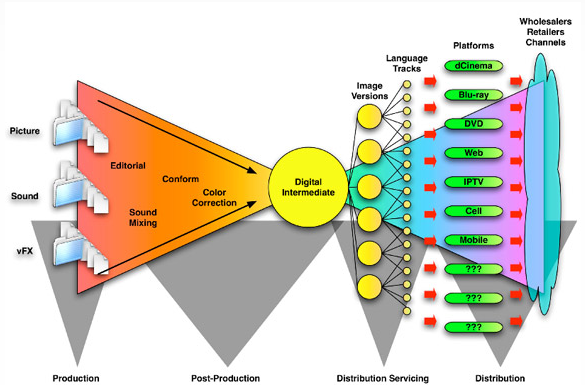The Digital Cinema lab has relocated to the University of Southern California campus!
Eileen Norris Cinema Theatre 3507 Trousdale Parkway Los Angeles, CA 90089 Tel: (213) 743-1600
Parking (USC Map Grid indicators) USC Map PDF Entrance off Jefferson Blvd and Royal St: Gate 4 (G3) Parking Structure D (G4) Norris Theatre (E4)
Brief History
The Digital Cinema Laboratory opened at the historic Hollywood Pacific Theatre in October 2000 to perform research and establish benchmarks regarding standards for digital cinema distribution and exhibition. The DCL has been host to myriad meetings, discussions, tests and demos surrounding digital cinema. ETC and the DCL are often credited for providing the catalyst that made digital cinema a reality rather than a theoretical discussion.
In November 2006, after digital theaters began rolling out in earnest, ETC moved the lab to the Eileen Norris Cinema Theatre on the University of Southern California campus in downtown Los Angeles, where the DCL could continue providing a testing facility at the same time providing a platform for training the next generation of film creators.
DCL Mission
To be a global leader in providing a test bed for digital cinema distribution and exhibition, as well as for the growing use of digital cinema technology in image creation and post production.
To evaluate proposed technology solutions for quality, robustness, and interoperability.
To reach out to the creative community and bring their needs and their artistic and critical skills to bear on solving problems in the transition to digital cinema.
To work with efforts underway around the world, so that digital cinema labs can share test materials and procedures.
To be a showcase for the best in cinema presentation.

